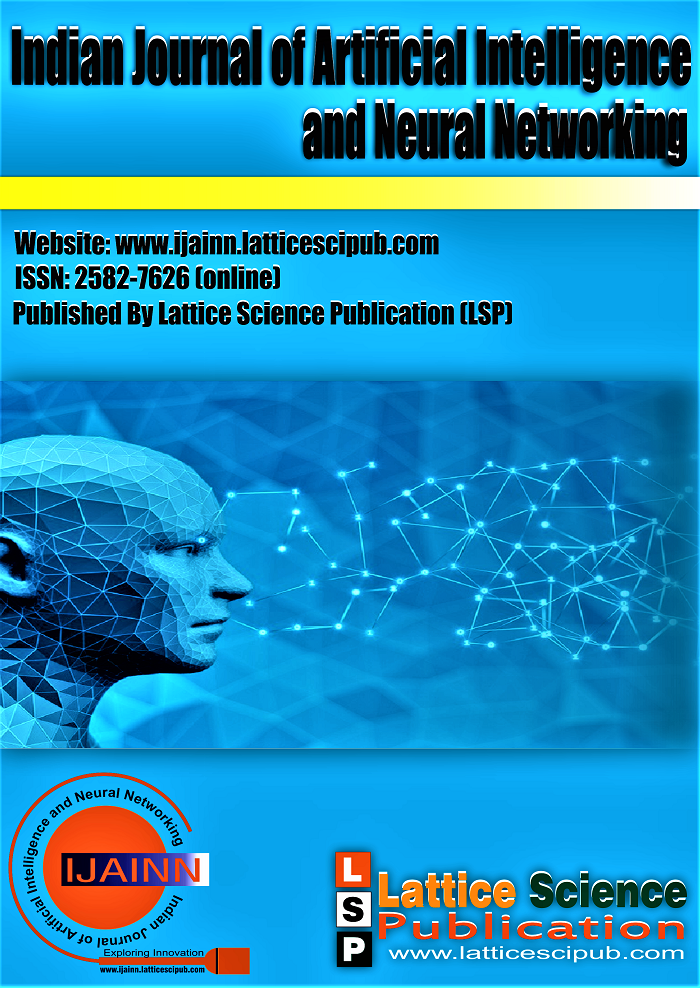Effective Text Processing utilizing NLP
Main Article Content
Abstract
Summarizing is the practice of condensing a body of material into a more manageable size while retaining all of the key data elements and the intended meaning. Automatic text summarizing systems can now quickly retrieve summary phrases from input documents. However, it has a number of shortcomings, such as duplication, insufficient coverage, incorrect extraction of key lines, and poor sentence coherence. In this study, a new concept of summarizer technique is proposed using the Python spacy package. It extracts the most significant information from the text. The scoring system is also used to compute the score for the words in order to determine the word frequency. The findings show that the proposed method completes the summary process faster than the current algorithm. An online tool called the text to summary converter aids in material summarizing. This programmer will give us a summary of the data that we upload. The primary goal is to accurately summaries the data entered. The most crucial sentences will be removed before the unnecessary ones.
Downloads
Article Details

This work is licensed under a Creative Commons Attribution-NonCommercial-NoDerivatives 4.0 International License.
How to Cite
References
Deepa, R., Konshi, J., Haritha, A. and Shobini, K. (n.d.). Automatic Text Summarization System. [online] Available at: https://www.ripublication.com/ijaerspl2019/ijaerv14n5spl_04.pdf [Accessed 19 Jun. 2022].
Johnson, M.E. (2018). Automatic Summarization of Natural Language. arXiv:1812.10549 [cs, stat]. [online] Available at: https://arxiv.org/abs/1812.10549 [Accessed 30 Jun. 2022].
.Maybury, M. (1999). Advances in Automatic Text Summarization. [online] Google Books. MIT Press. Available at: https://books.google.co.in/books?hl=en&lr=&id=YtUZQaKDmzEC&oi=fnd&pg=PA81&dq=EduardHovyand Chin Yew Lin.Automated+text+summarization in SUMMARIST. MIT Press [Accessed 30 Jun. 2022].
.Mahdipour, E. (2014). Automatic Persian Text Summarizer Using Simulated Annealing and Genetic Algorithm. International Journal of Intelligent Information Systems, 3(6), p.84. doi:10.11648/j.ijiis.s.2014030601.26. [CrossRef]
Srikanth, P. and Deverapalli, D. (2017). CFTDISM:Clustering Financial Text Documents Using Improved Similarity Measure. [online] IEEE Xplore. doi:10.1109/ICCIC.2017.8524466. [CrossRef]
Vipul Dalal Latesh L. G. Malik Semantic Graph Based Automatic Text Summarization for Hindi Documents Using Particle Swarm Optimization. Smart Innovation, Systems and Technologies book series (SIST,volume 84).
.Kupiec, J.M. and Schuetze, H. (n.d.). System for genre-specific summarization of documents. [online] Available at: https://patents.google.com/patent/US6766287B1/en [Accessed 30 Jun. 2022].
Doran, W., Stokes, N., Carthy, J. and Dunnion, J. (n.d.). Comparing Lexical Chain-based Summarisation Approaches Using an Extrinsic Evaluation. [online] Available at: http://www.oriyana.cz/id32402/jazyk/jazykove(2da/aplikovana(1_lingvistika/Ontologie/WordNet/Conference_2004/103.pdf [Accessed 30 Jun. 2022].
Goldstein, J., Kantrowitz, M., Mittal, V. and Carbonell, J. (1999). Summarizing text documents. Proceedings of the 22nd annual international ACM SIGIR conference on Research and development in information retrieval - SIGIR ’99. doi:10.1145/312624.312665. [CrossRef]
Luhn, H.P. (1958). The Automatic Creation of Literature Abstracts. IBM Journal of Research and Development, [online] 2(2), pp.159–165. doi:10.1147/rd.22.0159. [CrossRef]
11.Kedar Bellare, Anish Das Sharma, Atish Das Sharma, Navneet Loiwal and Pushpak Bhattacharyya.Generic Text Summarization Using Wordnet. Language Resources Engineering Conference (LREC 2004), Barcelona, May, 2004.
Satapathy, S.C. and Joshi, A. (2017). Information and Communication Technology for Intelligent Systems (ICTIS 2017) - Volume 2. [online] Google Books. Springer. [CrossRef]
Deepa, R., Konshi, J., Haritha, A. and Shobini, K. (n.d.). Automatic Text Summarization System. [online] Available at: https://www.ripublication.com/ijaerspl2019/ijaerv14n5spl_04.pdf [Accessed 19 Jun. 2022].
A. Nenkova and K. McKeown, “A survey of text summarization tech-niques,” in Mining text data. Springer, 2012, pp. 43–76. [CrossRef]
D. Sakhare, R. Kumar, and S. Janmeda, “Development of embed-ded platform for sanskrit grammar-based document summarization,” inSpeech and Language Processing for Human-Machine Communications.Springer, 2018, pp. 41–50. [CrossRef]
X. Mao, H. Yang, S. Huang, Y. Liu, and R. Li, “Extractive summarization using supervised and unsupervised learning,” Expert Systems with Applications, vol. 133, pp. 173–181, 2019. [CrossRef]
R. Z. Al-Abdallah and A. T. Al-Taani, “Arabic single-document text summarization using particle swarm optimization algorithm,” Procedia Computer Science, vol. 117, pp. 30–37, 2017. [CrossRef]
P. B. Baxendale, “Machine-made index for technical literature—an experiment,” IBM Journal of Research and Development, vol. 2, no. 4. [CrossRef]
R. Oak, “Extractive techniques for automatic document summarization:a survey,” International Journal of Innovative Research in Computer and Communication Engineering, vol. 4, no. 3. [CrossRef]
S. Chitrakala, N. Moratanch, B. Ramya, C. R. Raaj, and B. Divya,“Concept-based extractive text summarization using graph modelling and weighted iterative ranking,” in International Conference on Emerging Research in Computing, Information, Communication and Applications.





